It was almost impossible to avoid pro wrestling in the ’80s, ’90s, and early ’00s. Stars like The Undertaker, Stone Cold, The Rock, Hulk Hogan, and the Macho Man Randy Savage were key figures in the pop imaginary — their ubiquitous catchphrases became the background noise of the zeitgeist, making these larger-than-life fighters analogous to how superheroes seem to function in our contemporary cultural landscape.
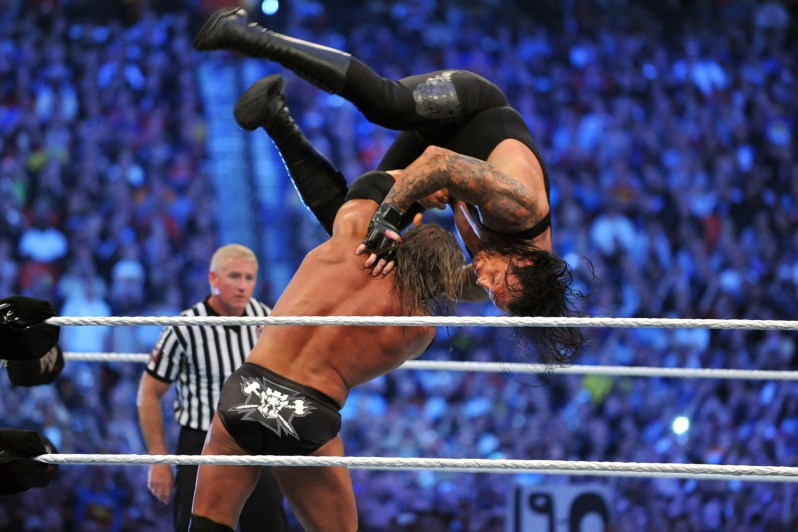
Wrestling is still popular — millions of people tune in to watch RAW and Smackdown Live! every week — but it’s nowhere near as big as it once was. Certainly, the WWF — now WWE thanks to some copyright difficulties — didn’t do itself any favors by creating a product that was overtly sexist, racist, and increasingly inscrutable to outsiders.
But suddenly, almost out of nowhere, the wrestling industry has undergone a massive revolution: At even the highest levels of the medium, the buffoonery and bigotry that once defined pro wrestling is being overhauled to welcome in new fans of all types. The plots are becoming interesting and accessible again, and new athletes are telling fresh — and sometimes incredibly experimental and emotionally moving — stories.
As with any niche subculture — punk rock or comic books or drag or anime — getting ahold of the sort of unwritten rules of these worlds can be a bit difficult. Because pro wrestling in general has a history of being socially maligned and because it often attracts social outcasts, there’s a sense of fierce protectiveness about who can or can’t be let in.
Luckily, if you’ve got the curiosity and a healthy thirst for violence, we’re here to help you understand the basics of pro wrestling culture. But let’s start with the most obvious question first:
What Is Pro Wrestling?
Is it an art form? Is it a sport? Where did it come from? And, of course, it’s all fake — right?
Pro wrestling evolved into its own sort of hybrid medium or genre of entertainment out of carnival culture, from where the first pro-wrestling shows emanated. Like many attractions at the carnival, wrestling was a quick scam to get as much money as possible out of the hands of customers — and to some extent that mentality still exists in the business today, but now on a massive, global, and corporate scale. The staged fights were local attractions with the veneer of authenticity, usually quite simplistic as far as storylines go, so as to capture the sparse attention spans of attendees who might be easily amused by some other game, feature, or wily character.
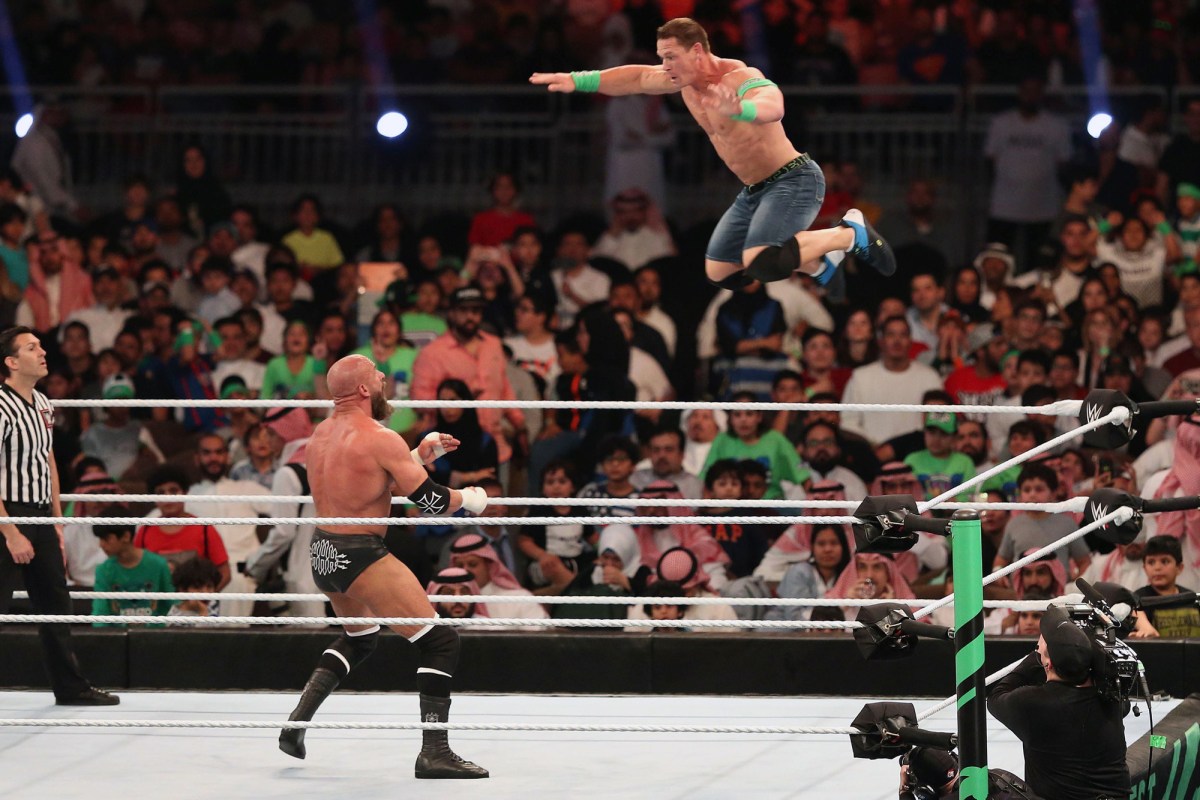
So, yes, the fights in pro wrestling are all pre-planned — but that doesn’t mean they’re fake. The people in the ring are doing those moves for real, and they’re often getting seriously hurt as a result. The winner of a match (and sometimes the sequences of moves) are orchestrated before the fighters get in the ring, but the brawlers have to be ready to change entire years-long narrative arcs on the fly if someone gets injured or if certain political or interpersonal situations are in flux. That means that pro wrestling is a sort of living, breathing, serial narrative. Most fans won’t ever know what parts of which stories are real and which were staged — and that’s part of the fun. Learning about the backstage intrigue behind what you see on the screen or in the ring is just as compelling as the show itself.
It’s ironic that with the popularity of what has been dubbed “immersive theater” in avant-garde circles, pro wrestling has been left out of the conversation — in that pro wrestling was perhaps one of the earliest and most popular examples of this type of experimental narrative. Pro wrestlers often use alter egos or act as exaggerated versions of themselves — even when they’re not in the ring they’ll often do their best to make sure they never break character or give away the secrets of the business, the way magicians won’t explain their illusions.
When pro wrestling started, it was impossible to tell longer-form stories because most people would see the fights while they were at the carnival — and that was it. When pro wrestling companies began operating as their own attractions outside the world of the carnivals, though, they began to develop local heroes and villains (babyfaces and heels, respectively) who could help get crowds invested and bring people back to the shows each month or week. And now that wrestling is on TV, it’s possible to tell even more complicated — sometimes incredibly labyrinthine, multi-dimensional, surreal, experimental, and complex — stories that span literal generations.
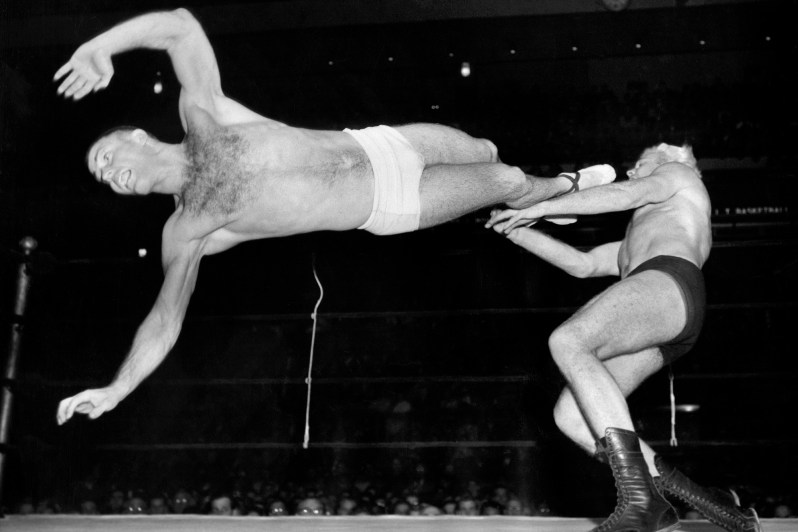
It’s true that at one point wrestlers and the people who ran the industry worked harder to maintain an illusion of reality — at one point known as kayfabe — but with the omnipresence of news reporting and social media it would be impossible to pull off that kind of hoax on such a grand scale in a contemporary setting. Now, pretty much all wrestling fans are in the know and watch wrestling not in spite of how “fake” it is, but because they are intrigued by the characters, the costumes, the drama, and the action. Wrestlers still will act like it’s real during the show — in the same way that characters in a movie don’t often acknowledge they are in a movie. Why would they?
So: wrestling is a narrative art form that requires athletic ability. It’s live, immersive, post-modern combat theater in the round, which absolutely requires audience participation.
It’s Not All WWE
One huge mistake that people outside of the wrestling industry make is thinking that World Wrestling Entertainment, run by CEO Vince McMahon (who also happens to have played a cartoonishly villainous version of himself in many wrestling storylines over the past few decades), is the only wrestling company in the world. It’s true that WWE tries to act as the be-all-end-all of pro wrestling, and its ubiquity is a self-consciously created media narrative that the brand has purposefully fostered for years, so as to create the illusion that they have no real competition.
But WWE is one of literally hundreds of wrestling companies operating in the United States and beyond. It’s certainly the biggest of all the companies in the world, but it’s not the only one — and it’s far from the only one that matters.
WWE is basically the American Idol of pro-wrestling. It’s the most mainstream, accessible, and widely appreciated example of pro wrestling — but it’s also dumbed down, plodding, and not exactly diverse in terms of style or innovation. Truly, the athletes who compete in WWE are incredibly talented, like all the singers on American Idol, but it’s only a small sample of the kinds of wrestling that actually exist in the world. It’s the corporate, radio-ready, sanitized, pop music of pro wrestling. If someone were to say they didn’t like music because they didn’t like American Idol you’d think they were insane — and the same goes for WWE and pro wrestling.
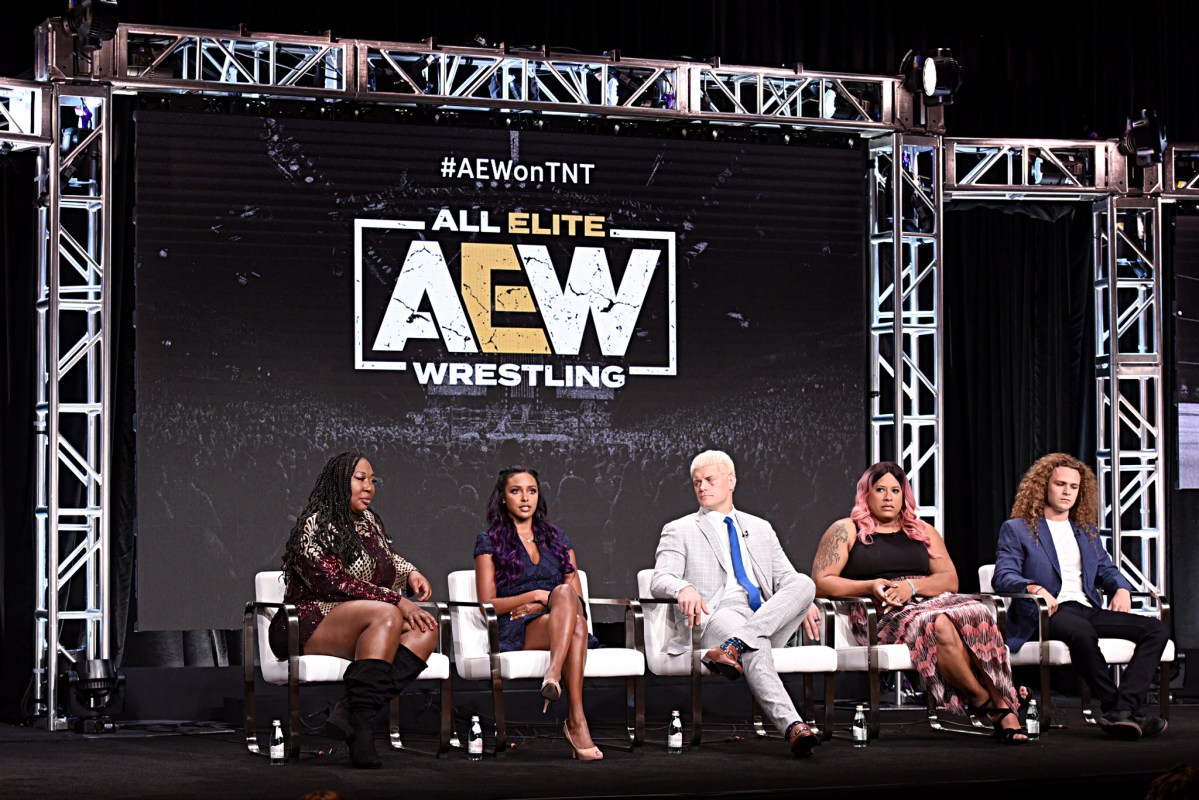
On a corporate level, there’s almost no one who can compete with WWE. A new company called All Elite Wrestling, started by Cody Rhodes (the prodigal son of a legendary pro-wrestler named Dusty Rhodes, who had been scorned by Vince McMahon — see how Shakespearean this is?), was created in 2019 and might be WWE’s first threat in years, but even they can’t really go head-to-head with the billion-dollar franchise as far as scope and scale goes. Meanwhile, companies like New Japan Pro-Wrestling, Consejo Mundial de Lucha Libre, and Lucha Libre AAA operate outside the bounds of WWE in other countries where wrestling is popular (Japan and Mexico) and have garnered more cultish followings amongst die-hard fans in the USA.
But as in music, there’s what you hear on the radio vs the indie music scene. Indie wrestling is far more vibrant, diverse, and edgy than what you’ll see on TV. The indie scene has its own stars, stories, and style — and despite it lacking widespread popularity, it’s usually better in quality. Pretty much every state and major city in the USA has its own indie companies, and although it might take a little bit more work to find an indie show, you won’t really ever “get” what pro wrestling actually is until you see what’s happening in the local scene.
The Culture Of Wrestling In 2020
There’s no doubt that pro wrestling — probably since it was first conceived as a form of entertainment — has traded in sexist and racist tropes. Heels were often representatives of some foreign country with whom the USA had been in conflict. Women were traded as prizes or treated as eye-candy for the male fighters and audience members. And if you go back and look at the history of pro wrestling, it got really nasty there for a while, even — or especially — in the wrestling seen on TV.
It’s truly hard to watch some of the most popular story arcs from even 20 years ago without cringing at the lack of decorum, decency, and respect for the female, queer (or queer-coded), and non-white performers. Scenarios in which women were unwillingly stripped naked were not uncommon, crowds called for the beatings of LGBTQs, and McMahon himself on at least one occasion openly used the N-word on TV. It was shameful.
It might be hard to believe this for a certain crop of kids born in the ’80s or ’90s who grew up with these wrestling atrocities — but, we promise, it’s not like that anymore.
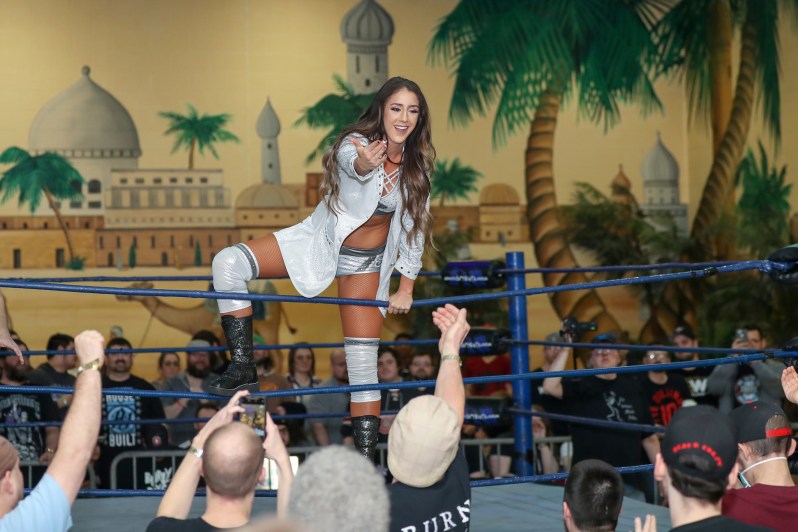
Although wrestling culture tends to have something of a lag behind mainstream culture in terms of aesthetics, in the past 5-10 years the entire pro-wrestling industry has done it’s best to update itself as fast as possible so as to keep up with the times. For the most part, the kinds of overt racism and sexism that used to be a regular feature of wrestling have been eliminated. Of course, there are screw-ups all the time, and outspoken fans are quick to call out what they see as unacceptable. But pro wrestling today is no more or less sexist, racist, or homophobic than anything else you’d see on TV.
In fact, due to a conscious effort on the part of WWE, women’s wrestling is slowly becoming just as popular as fights between men. At Wrestlemania in 2019, a women’s match was the main event of the show for the first time in WWE’s history. It seems one of the goals of WWE is to slowly build up its women’s roster to have equal screen time with the men’s division — they’re not quite there yet, but it’s actually happening! Sexist commentary is increasingly rare, and the women’s fights are taken as seriously as any other match on the card. Meanwhile, WWE also crowned their first African-born heavyweight champion, Kofi Kingston, just last year as well. And just this month, AEW’s Nyla Rose, an openly transgender woman, captured their women’s championship.
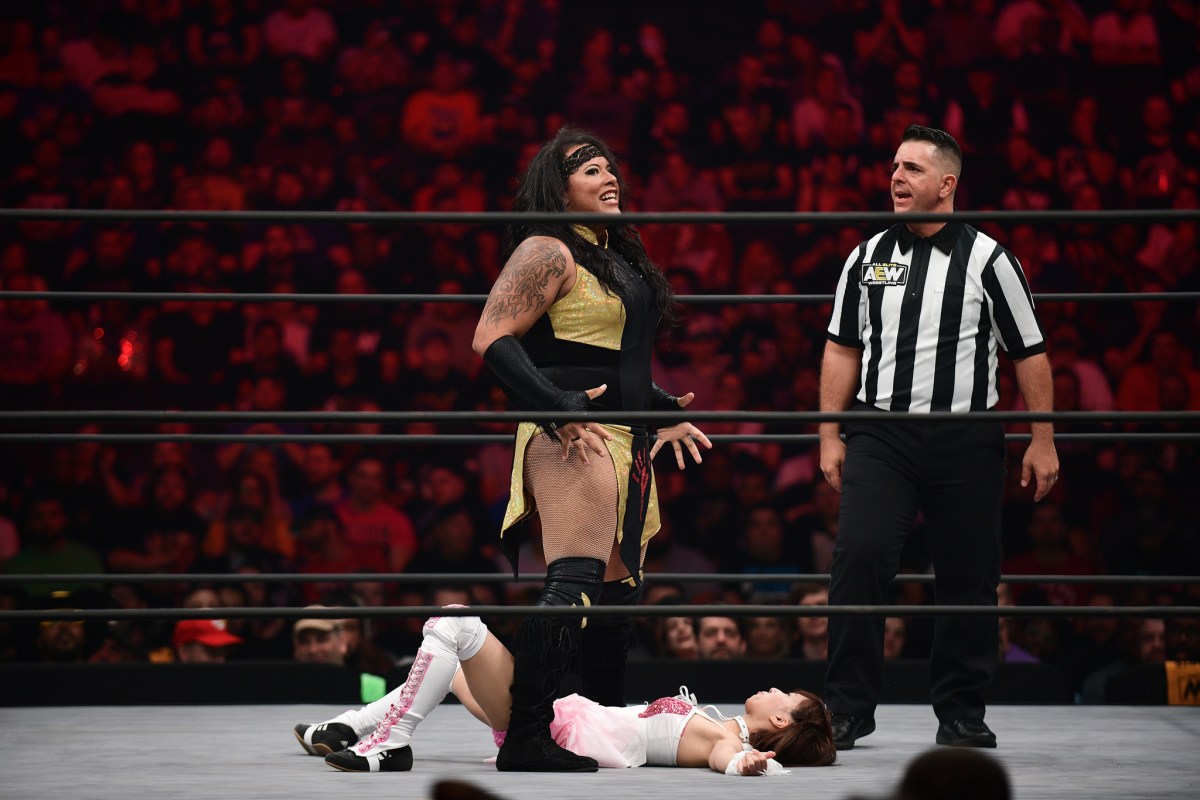
On the indies, women’s wrestling has taken center stage as well. Intergender wrestling, in which people of all genders can compete against each other, has become commonplace. Women, POC, and LGBTQ-owned and operated federations are popping up all over the world. Many of the biggest stars on the indie circuit are women and/or openly queer and/or non-white. Similarly, indie companies are beginning to tackle problems like fan and performer harassment, sex crime coverups, and cyberbullying with official policies — meaning that that the culture of abuse that existed in the business is clearly on its way out.
Certainly, the culture hasn’t been completely revolutionized just yet, but if more diverse fans are coming into the fold, wrestling will continue to change.
Embrace The Glamour
Because of pro wrestling’s reputation as low-brow or “redneck” entertainment, one thing that outsiders often point to is the over-the-top costuming. Sure, sometimes the wrestlers look a bit outrageous in their sequined panties and tights.
Without launching into a lecture on the inherent pleasures of camp — if you watch for long enough, you begin to understand that wrestling has its own idiosyncratic form of glamour. In fact, many wrestlers put hundreds of hours into customizing their own gear — and that kind of dedication is admirable no matter how silly you might think the results are.
https://www.instagram.com/p/B8UnLxJprIj/?utm_source=ig_web_copy_link
Besides, wrestling has become increasingly fashionable as of late. Emerging stars like Bianca Belair (who hand sews her own looks) and Naomi have recently garnered viral fame for their exciting updates on wrestling fashion, and the older generation of wrestlers (stars like Ric Flair or Andre The Giant) have since been inducted into the pantheon of fashion gods, thanks in part to their popularity amongst rappers.
Wrestling is a spectacle, so don’t get too hung up on the rhinestones.
The Politics
There’s, unfortunately, no way to divorce art from politics, and pro-wrestling is no exception. There’s a handful of major political issues plaguing the pro-wrestling industry right now.
Probably the most important one is labor. Considering the immense physical toll wrestling takes on a person’s body, one would think that wrestlers would be fairly compensated for their endeavors. This is far from the case even at the highest level: in WWE, wrestlers are hired as independent contractors, meaning that things like their healthcare (and even travel!) costs are paid for by the wrestlers themselves. On the indies, wrestlers are often being paid between $50-$500 for a match — and sometimes nothing at all. This is patently shameful, considering how wrestlers are literally risking their lives in every fight — and considering how an injury can sideline a wrestler for months, if not years. The first signs of unionizing are beginning to emerge in the industry, but many believe that wide-scale attempts at collective bargaining would entirely bankrupt the business, as the operating costs would suddenly become impossibly high, especially for independent companies.
Statistically, it has been proven that WWE can afford to treat their employees better — but simply won’t.
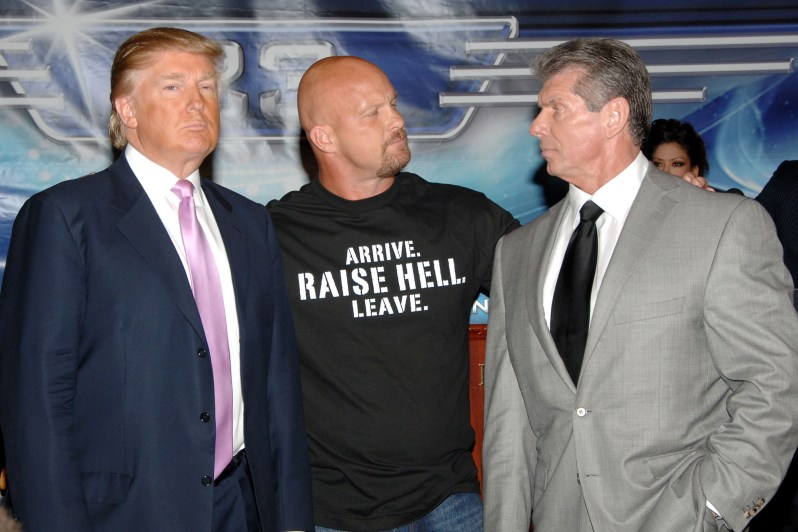
On that note: despite the outward appearance of progressiveness, WWE remains at its core a deeply conservative company. The WWE is a huge donor to the Trump administration. Linda McMahon, Vince McMahon’s wife, was named Administrator of the Small Business Administration by President Trump, despite her lack of expertise in that area. Vince McMahon’s decision to operate in Saudi Arabia, despite the political strife there, was widely criticized across the political spectrum. WWE’s deeply held conservativism creates huge problems for the diverse performers they hire, who must then negotiate the conflict between the massive exposure the company grants them and their own political convictions. McMahon’s history of ruthlessness when it comes to competition reflects his capitalist ethos. His company often tells straight-up provable lies to the media, purposefully targets smaller companies that may appear as competition, and misleads audiences about its own practices and history. While this at one point may have been in the interest of protecting kayfabe, this can no longer be considered the case.
The long-term health detriments of pro wrestling remain a hot button issue in the industry as well. The topic of steroid abuse remains somewhat shrouded in secrecy to this day. As with football, the long-term impact of CTE remain unclear, but many high-profile pro-wrestlers deal with considerable physical and mental health issues as a result of their work. Many wrestlers have lost their lives due to struggles with drugs and depression. Although the industry hasn’t quite found a comprehensive way to deal with this, the conversations are no longer being silenced in the same way.
If wrestlers aren’t getting paid very well and are constantly shortening their lifespans for the sake of their art, it should be acknowledged how meaningful the narratives they’re telling are for them.
Where To Get Started?
So, now that you understand what’s going on, you might be ready to get started. Where to begin?
The aforementioned RAW and Smackdown Live! shows are WWE’s biggest weekly events — but, quite frankly, they’re usually pretty boring. RAW is a whopping 3 hours every week, and the rosters for both are pretty immense, so it’s hard to get a hang of who’s who.
Your best bet is to give NXT a shot. NXT (an empty acronym) used to be WWE’s developmental brand — analogous to the minor leagues — but in 2019 it became its own unique show with its own cast of fascinating characters. It’s still owned by WWE, but the writing team operates largely independently, and the stories are more coherent and self-contained. NXT airs on the USA Network every Wednesday from 8-10 p.m. ET, with a condensed one-hour version popping up on Hulu the next day.
NXT is still rated PG, so if you want something slightly more adult, head over to TNT for AEW at the same time. AEW tends to come from a younger and fresher perspective and they’re less finicky about showing blood and airing swear words. It’s still a new program, and they’re definitely working out some kinks — but the talent level of the performers is truly unparalleled.
After a while of watching these series on TV, it’ll be time to graduate to the real thing. Live pro wrestling! A perfunctory Google search will almost certainly turn up where you can see wrestling in or around the city you live in. This is where you’ll really get a sense of the culture and artistry of pro wrestling. But first you’ll need to learn how to behave.
Some Basic Etiquette
Pro wrestling is interactive, meaning that audience participation is key. Like going to a midnight screening of Rocky Horror, the more the crowd is into it, the better the show will be. Wrestlers are smart, live performance artists and they’ll know how to play with expectations, encounters, and unexpected events on the fly.
Although wrestling often gets rowdy and is filled with some truly colorful characters, basic manners still apply: Don’t say anything racist, sexist, or homophobic. Don’t be sexually provocative with performers or other fans. Don’t show up smelling bad. Don’t throw things at the performers. Be aware of children.
The simplest rule to follow is this: Boo the heels, cheer the faces. It’ll be easy to tell who’s the good guy and who’s the bad guy in each match: The good guy will follow the rules and the bad guy will try to cheat. The story unfolds from there, and it’s more fun if you’re playing along. Eventually, you might find a heel whose attitude you love — and that’s cool, too! — but for the most part, the story will move more smoothly if you’re helping charge up the hero with your voice.
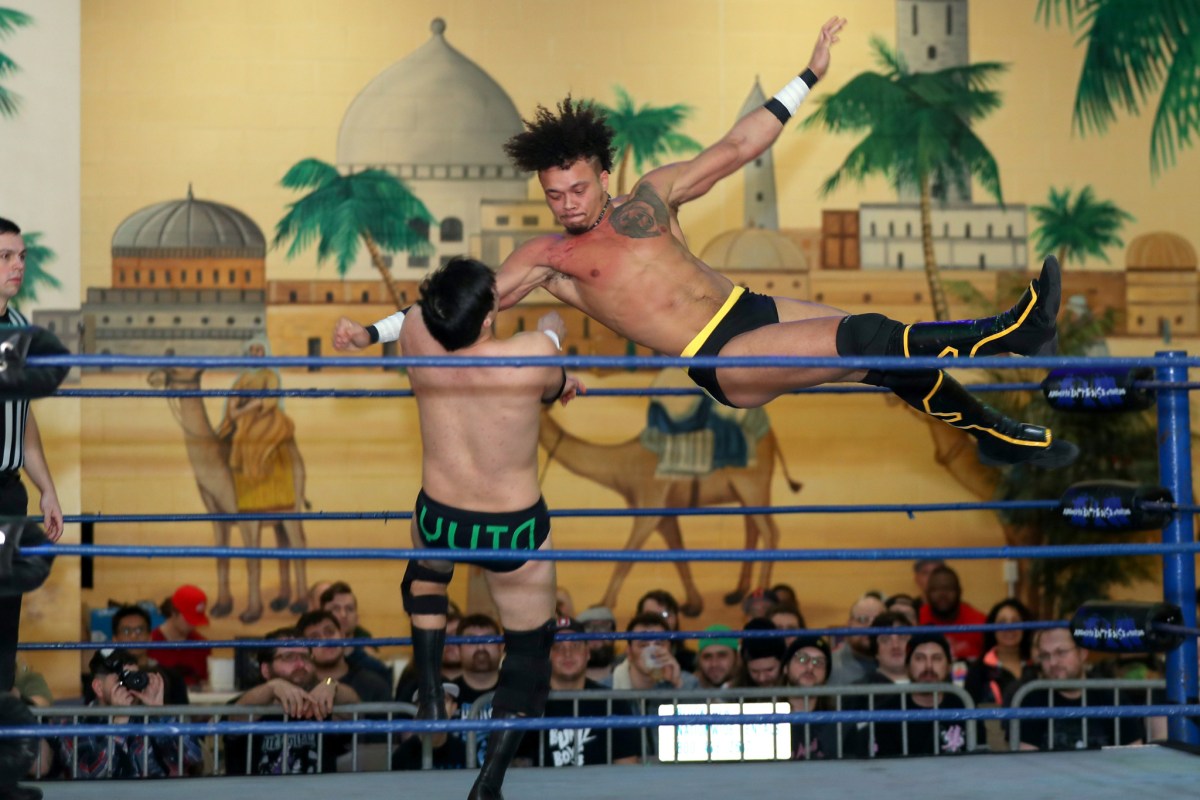
There’s a tendency amongst more extroverted burgeoning fans to want to get too involved in the story. Remember: You’re not the star of the show. Don’t start chants that call attention to your own involvement, don’t keep making jokes no one wants to hear, and don’t try and pull eyes away from the performers. And, even more importantly: Don’t touch the performers without consent — actually, don’t touch anyone without consent! — ever. Be mindful of your personal space. Some matches might look more “fake” than others, but no one needs to hear your thoughts about it. Don’t make fun of other fans for being into it or point out what doesn’t feel realistic to you — just go with the flow and see what happens! You might find yourself invested, despite your reluctance. It’s fun to let yourself go!
A cool part about the indie scene is you’ll most certainly have a chance to meet the performers and chat with them. The wrestlers are going to be in character even when the match is over — so don’t try and ask them what parts of the show are real and what parts are fake. If you do that, you’re basically telling them they didn’t do a good job convincing you that they were actually in a fight — it’s kind of insulting!
That being said, if you liked a particular performer, tell them. In fact, the best way of telling a performer you had fun is by buying their merch! Because wrestlers are wildly underpaid (see above), many are surviving on t-shirt sales alone. These people are ready to die for their art — and if you enjoyed their dedication you can help by compensating them financially. Think of it like tipping a waiter, but with suplexes instead of sandwiches.
One last thing: Don’t take it too seriously! If you find yourself getting legitimately angry about booking decisions, wins and losses, or any character — you’ve probably got the wrong attitude.



